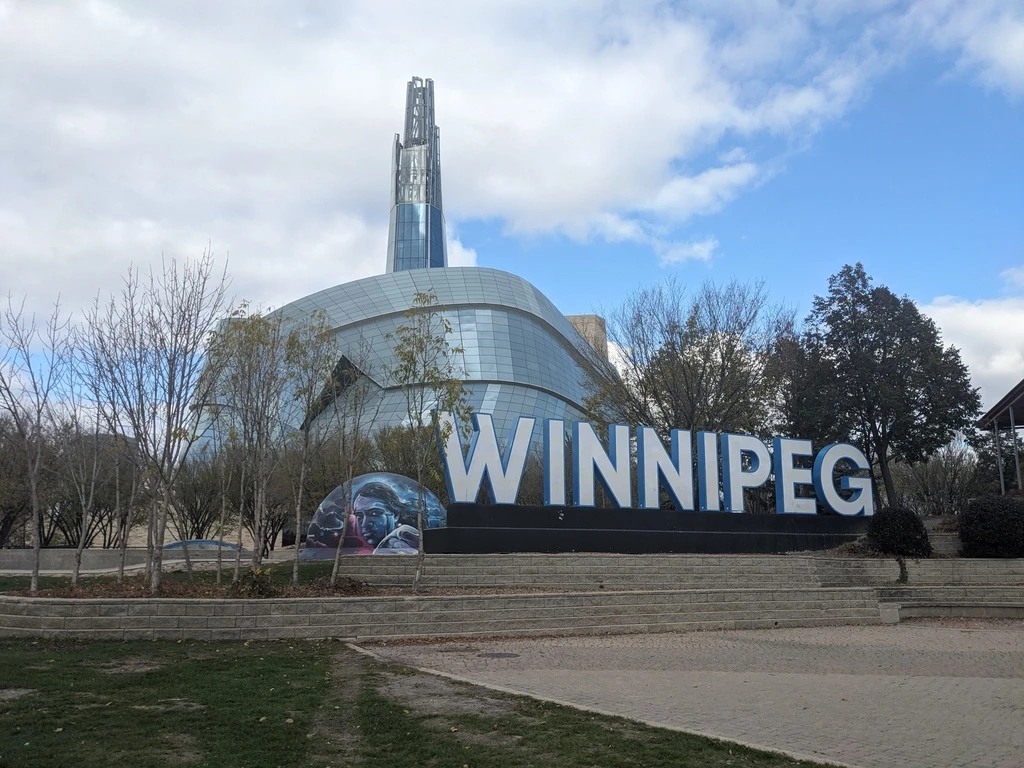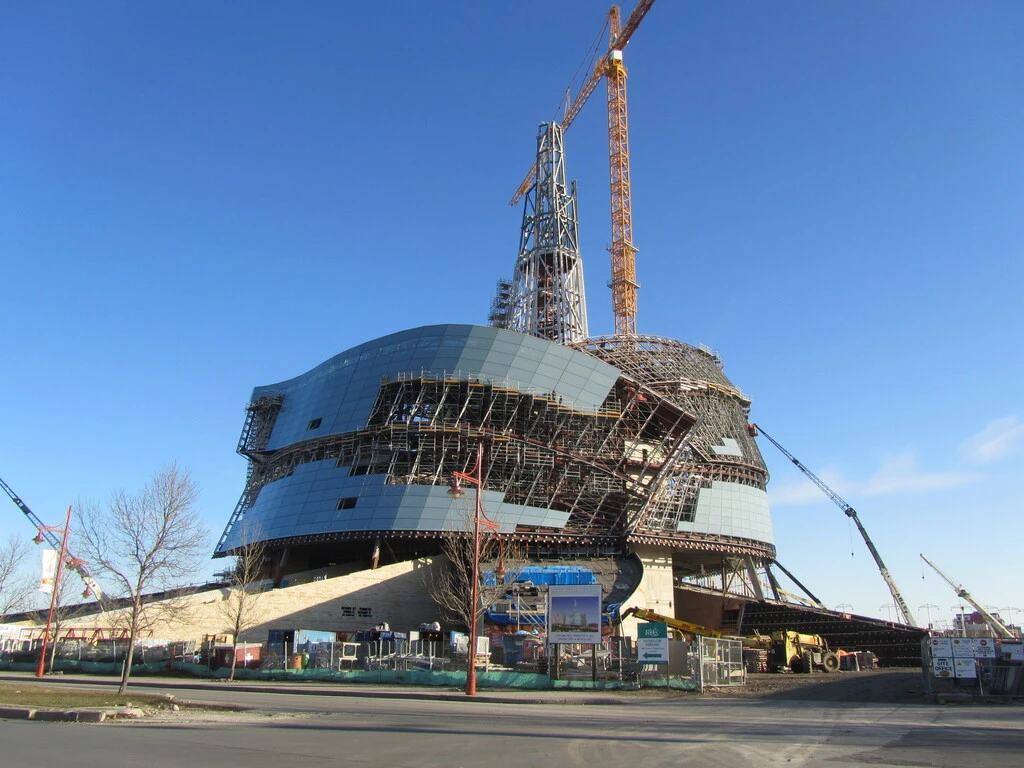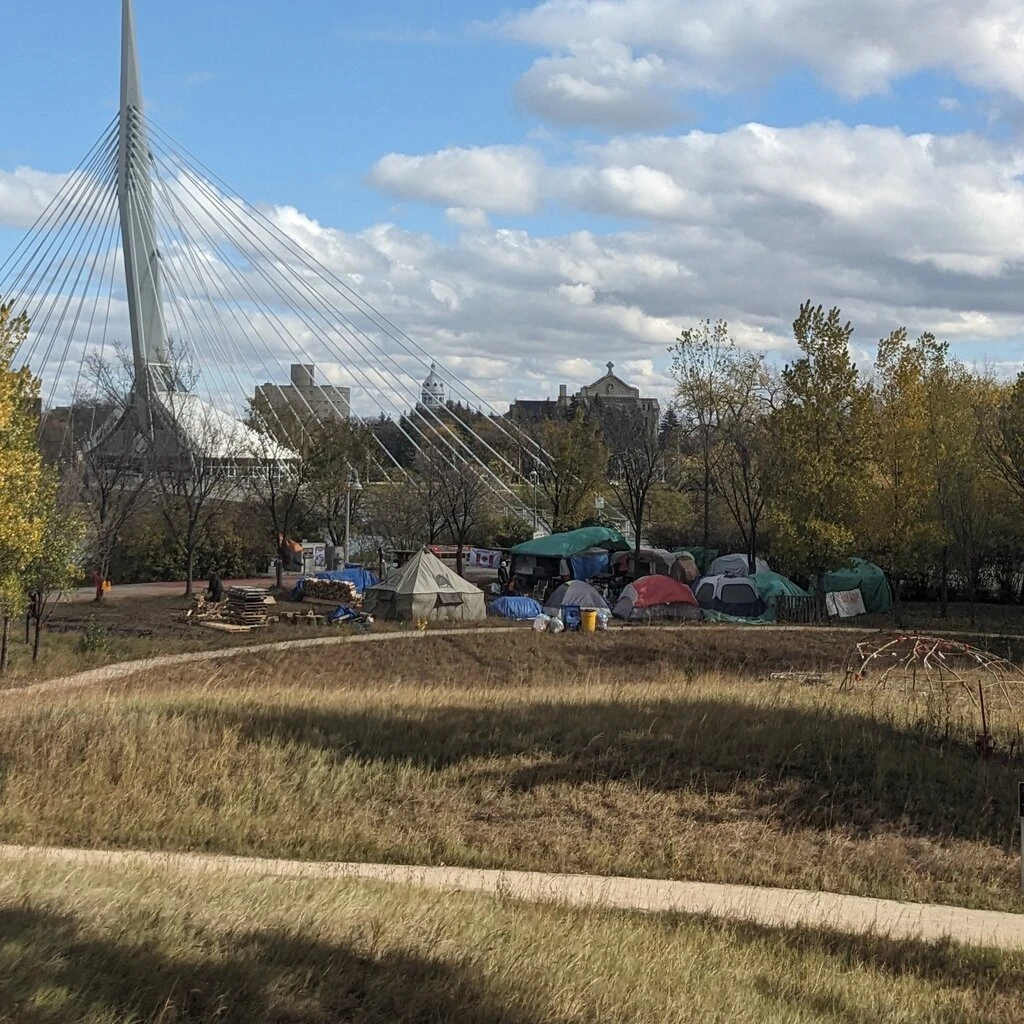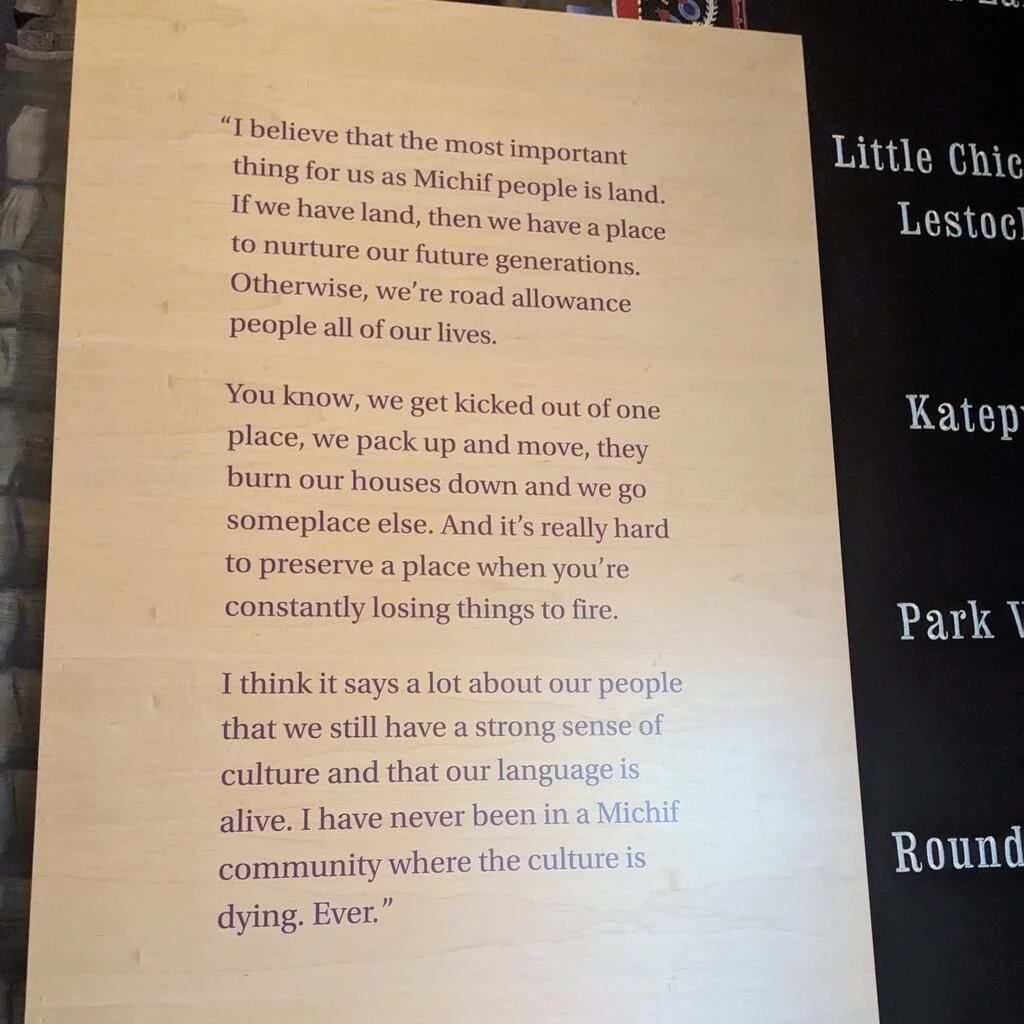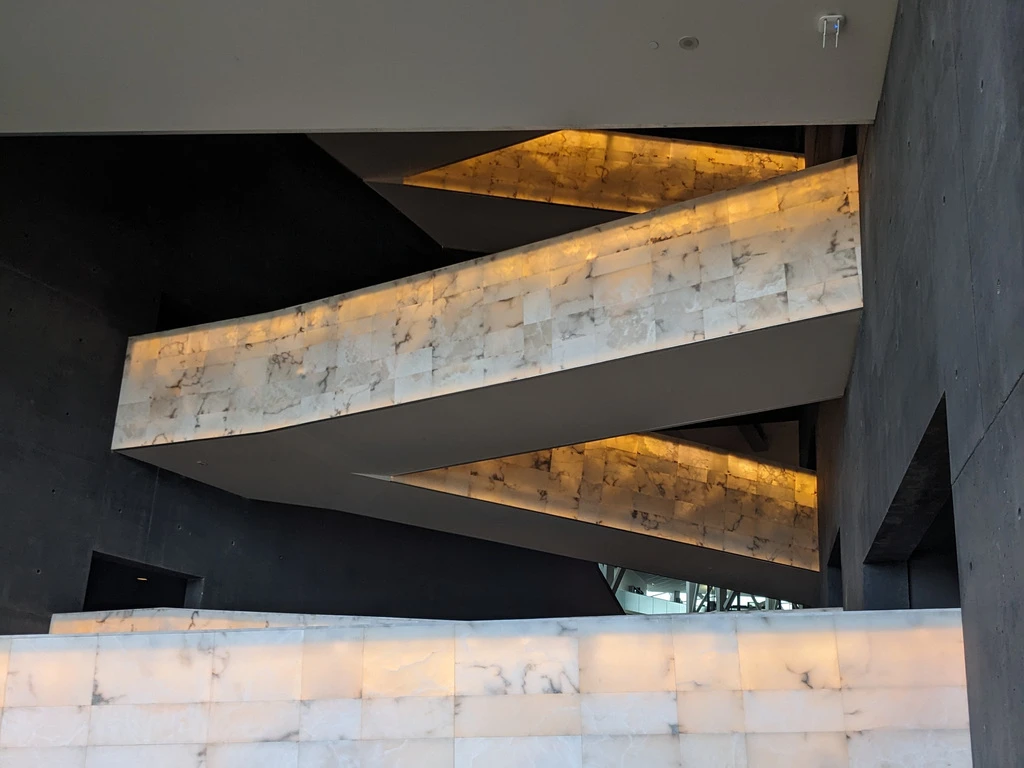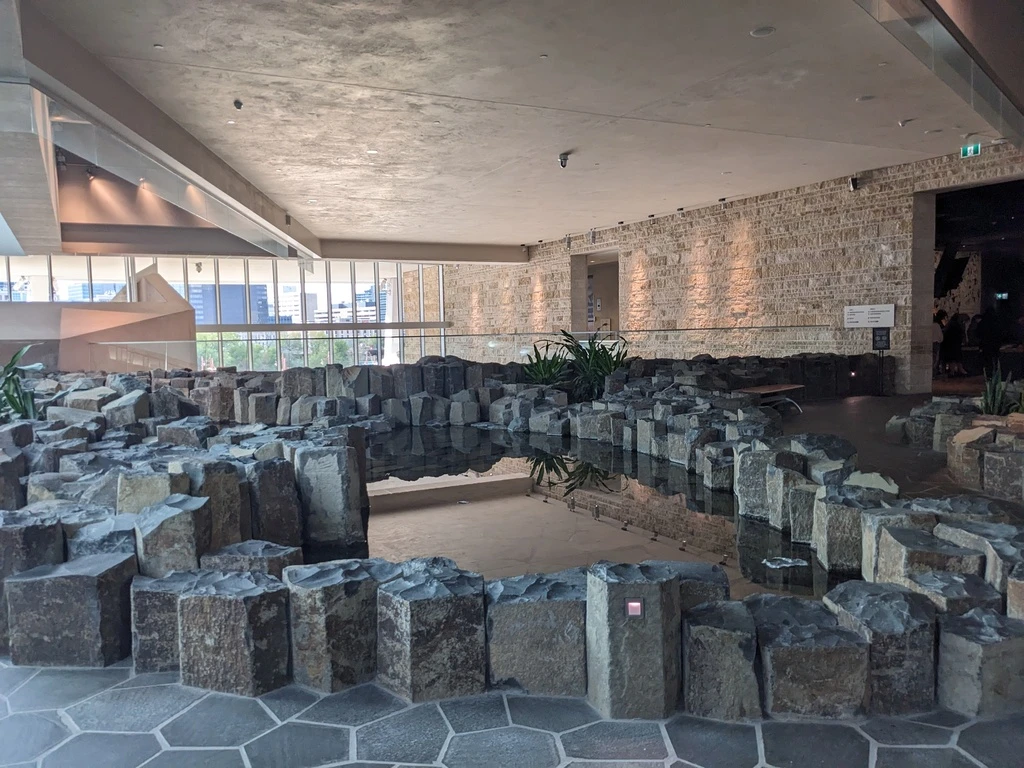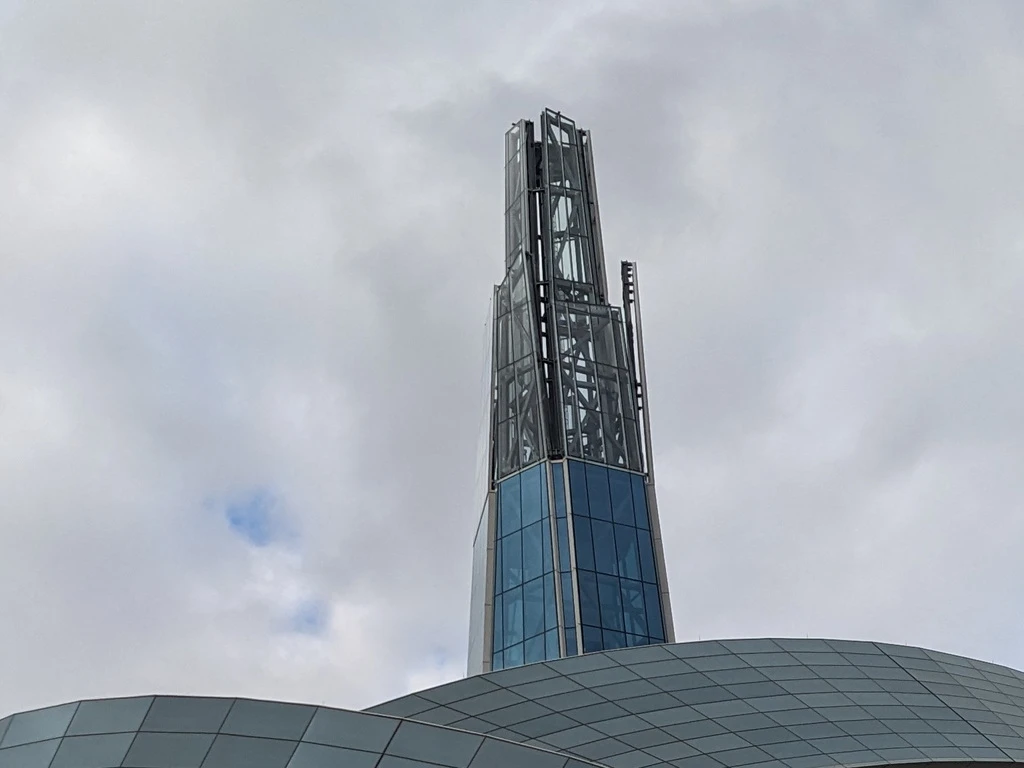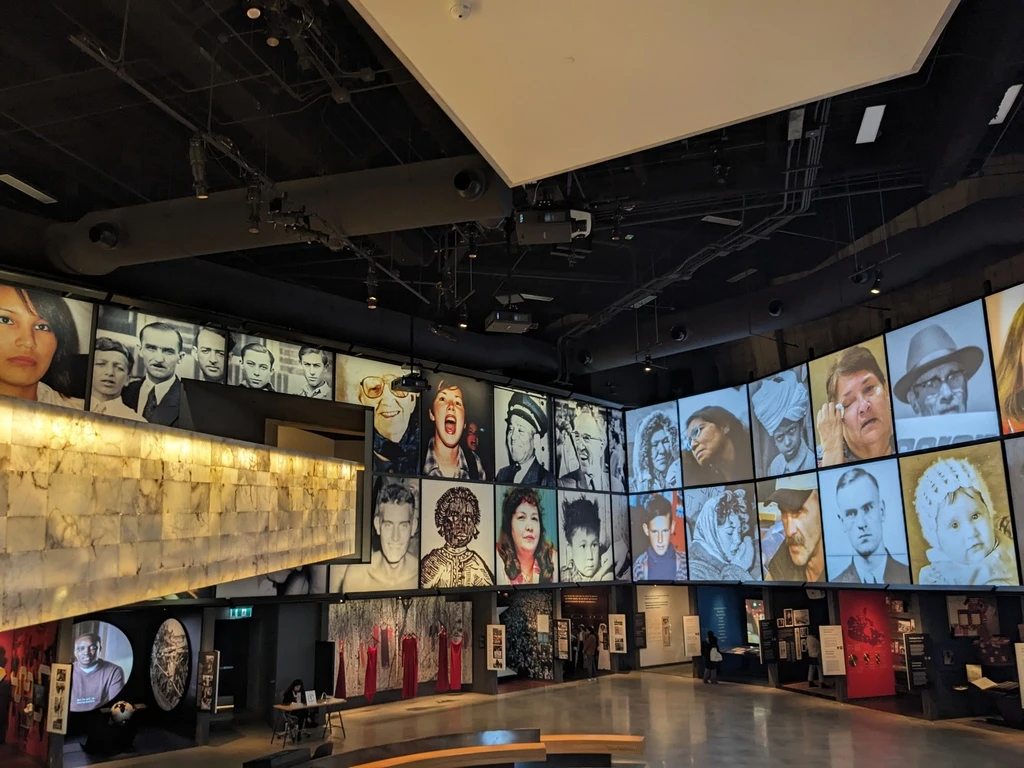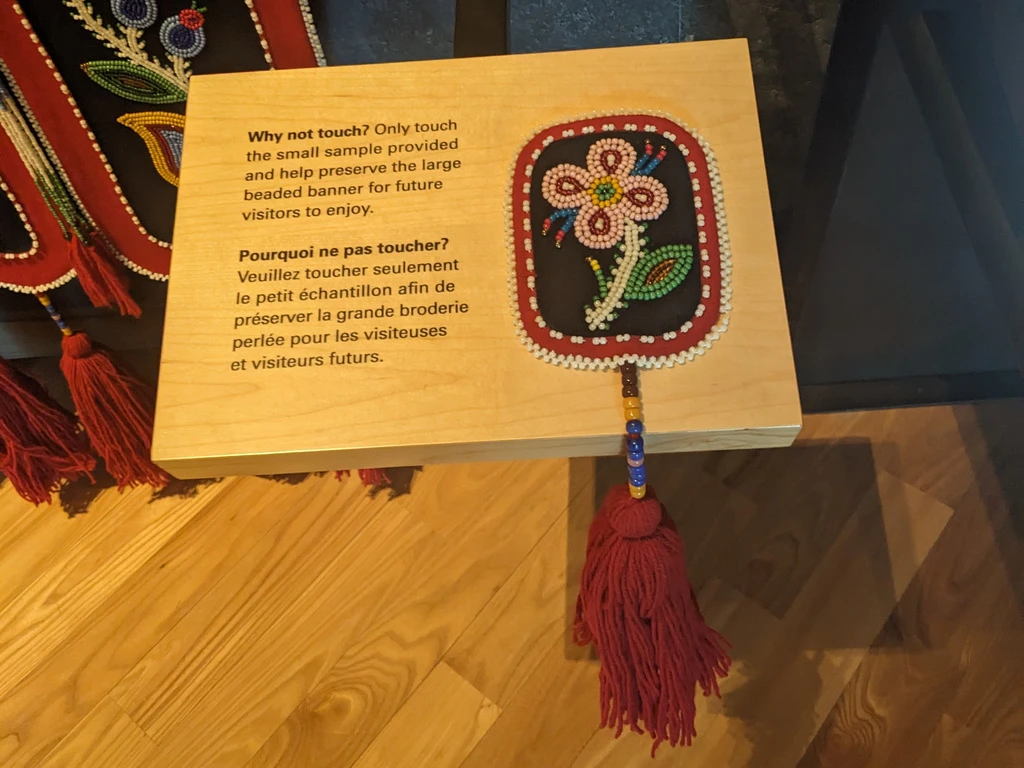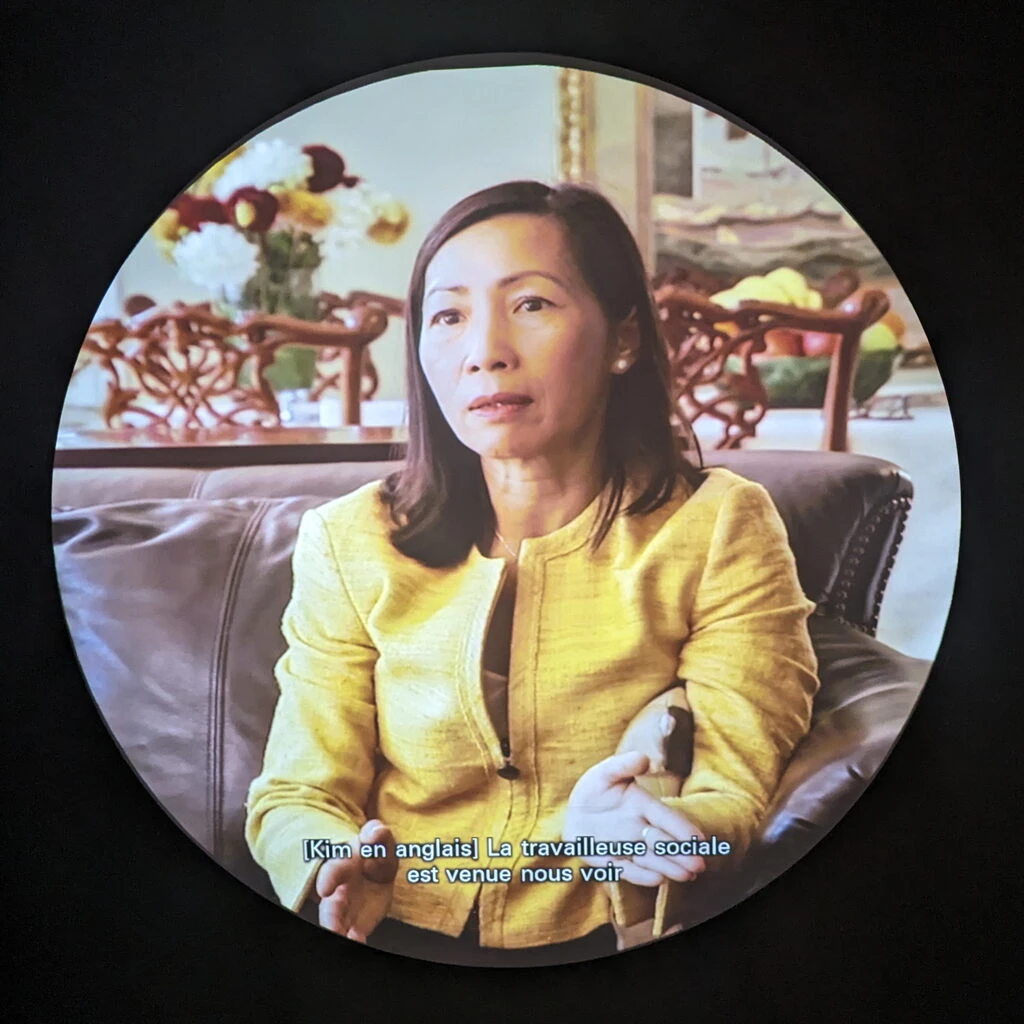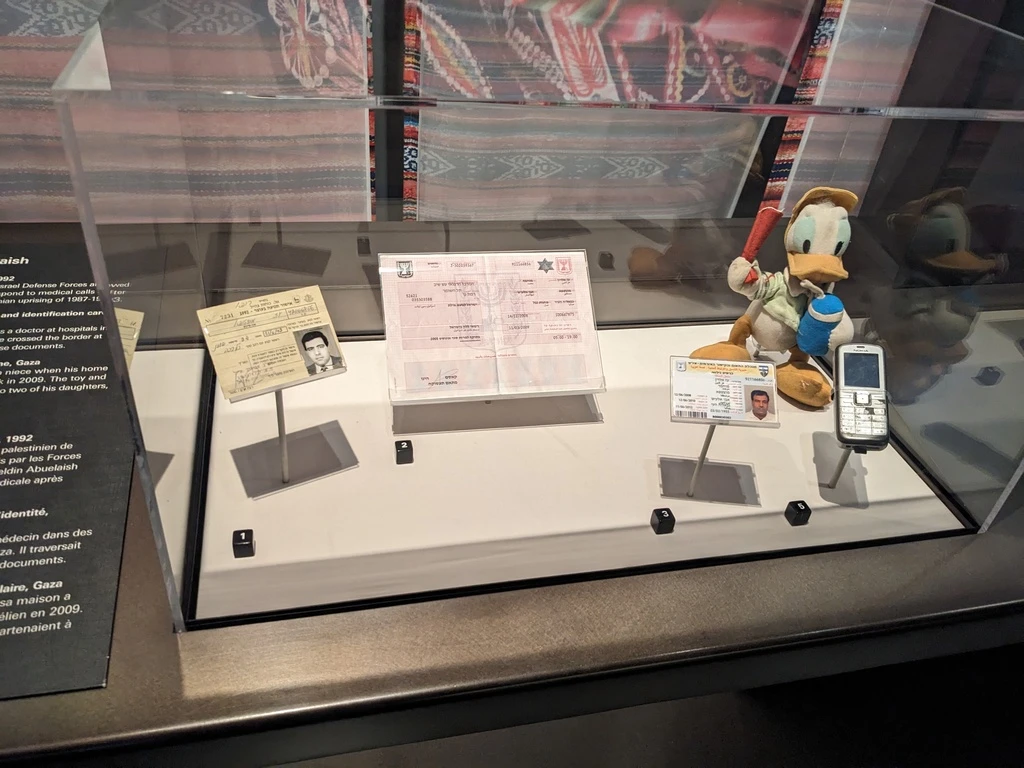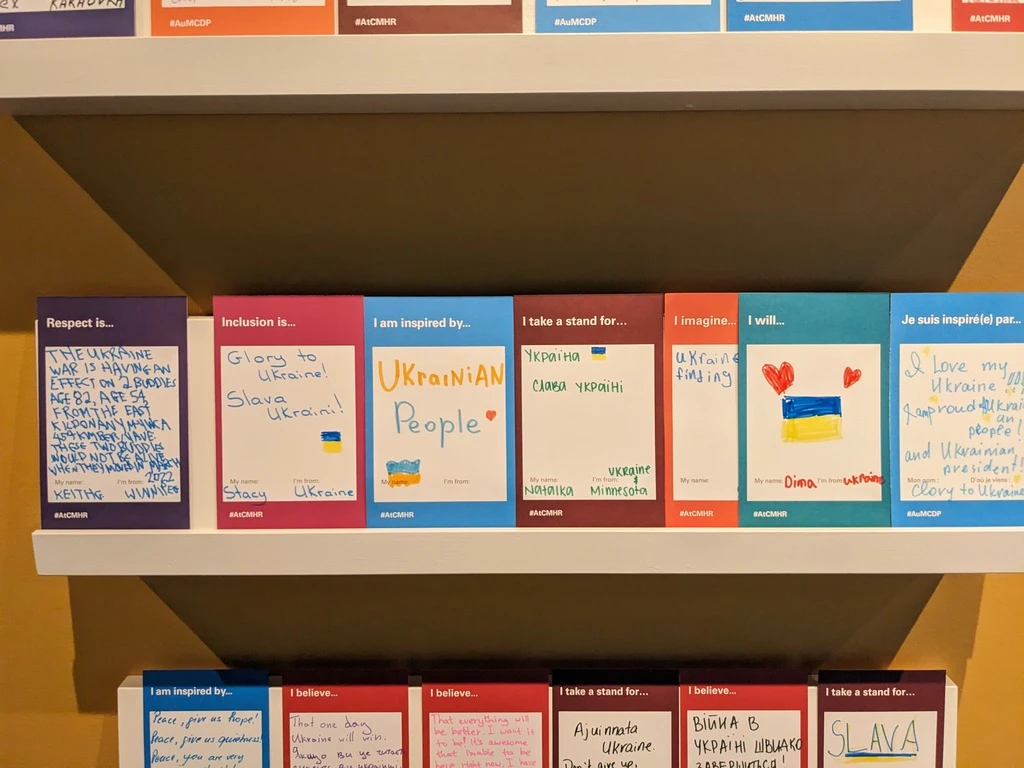Back in 2011 (pics), when I took the Canadian across Canada and got off the train for 4 hours in Winnipeg, the Canadian Human Rights Museum / Musée pour les droits de la personne was still under construction.
I found myself back in Winnipeg for 3 days in 2023 (to referee at the Manitoba Open, which was great) and the museum is now open, so I went for a visit after lunch at the Forks. Human rights is an abstract concept, so I was interested to see how the museum would represent that in the form of exhibits.
The building is an imposing glass construction right near Winnipeg Union Station, the Forks, St-Boniface, and pretty close to downtown Winnipeg. The tower in the museum provides an impressive view of Winnipeg.
In the shadow of the building is a tent encampment. It is visible from the window near a quotation by and about Métis “road allowance people”, who lived on road allowances before the roads were built, until being kicked out by the road eventually being built.
Anyway, the building is not a Frank Gehry building even if it kind of looks like one with the weird angles. Antoine Predock is the architect. On a Friday in October there weren’t heaps of people and the air quality was as good as outdoors in terms of CO2. I do wear a mask but really it would have been pretty low-risk not to (but also low-benefit).
Aside from looking imposing, three features stood out to me. It has a bunch of alabaster-clad ramps between levels. The Tower of Hope is a tower inside a building which provides views of Winnipeg. And, the Garden of Contemplation is indeed a serene corner of the museum right in the middle.
About exhibits
There was a private tour that I overheard a bit of at some point. The guide acknowledged that they really had to compress the stories to fit. I felt that to be very true when they were talking about the French Language Charter (aka Bill 101) in Quebec. There is a lot of missing context that I know from growing up there, e.g. see Toula Drimonis’s book We The Others (my review). Any one of these exhibits could be the subject of multiple PhD dissertations, but of course the random museum-going public isn’t going to be interested in that, and that’s not really the role of the public galleries of a museum.
Indigenous content
There was an exhibit about Treaty 3, which covers land not far from Winnipeg, and postdates New Zealand’s Treaty of Waitangi by 33 years. There are resemblances since it was negotiating with the British Crown in both cases. But the First Nations are not the same as the Māori and the natural resources are different.
Apart from that, there was other First Nations content worked into the museum exhibits. Highly relevant, especially since First Nations are among the classes of people in Canada with the most threats to basic human rights.
Issues
Since it’s all about me. There was a video segment with an interview with a Vietnamese boat person. (My parents were refugees but left by plane well before the fall of Saigon in 1975; the woman profiled in the video left afterwards, when they were being harassed by the Communist government). Normally, I read about historical Canada things, and, well, these things are not something my ancestors were involved with. This was different!
A lot of the issues that came up are far from resolved. There was a bit about Israel/Palestine, which is very much in the news starting with the attack by Hamas and continuing with the illegal collective punishment by Israel. And there was an exhibit about the five genocides recognized by Canada as of some date in the past, which included the Ukrainian Holodomor. That is very much relevant today with the Russian invasion. There was also an exhibit about that invasion just at the very end.
The museum does profile some of those who have fought for human rights. I’m not sure it really captures what it’s like to be denied one’s rights, nor the sacrifices by people who are fighting for their rights. But how much can a museum actually do that? It can use exhibits and perhaps audio and video. They had normal everyday civilian clothing with bullet holes in it is, like, “oh, that’s not normal”.
Bilingualism
This is a national museum and thus should be bilingual. Was it?
I didn’t interact with that many museum staff. The guy selling the tickets spoke good enough French, though he at least had an accent, and it’s not really an in-depth conversation that you have when buying a ticket. But, seems like they did manage to find people who can speak French, from my limited experience. Certainly the displays are in French.
